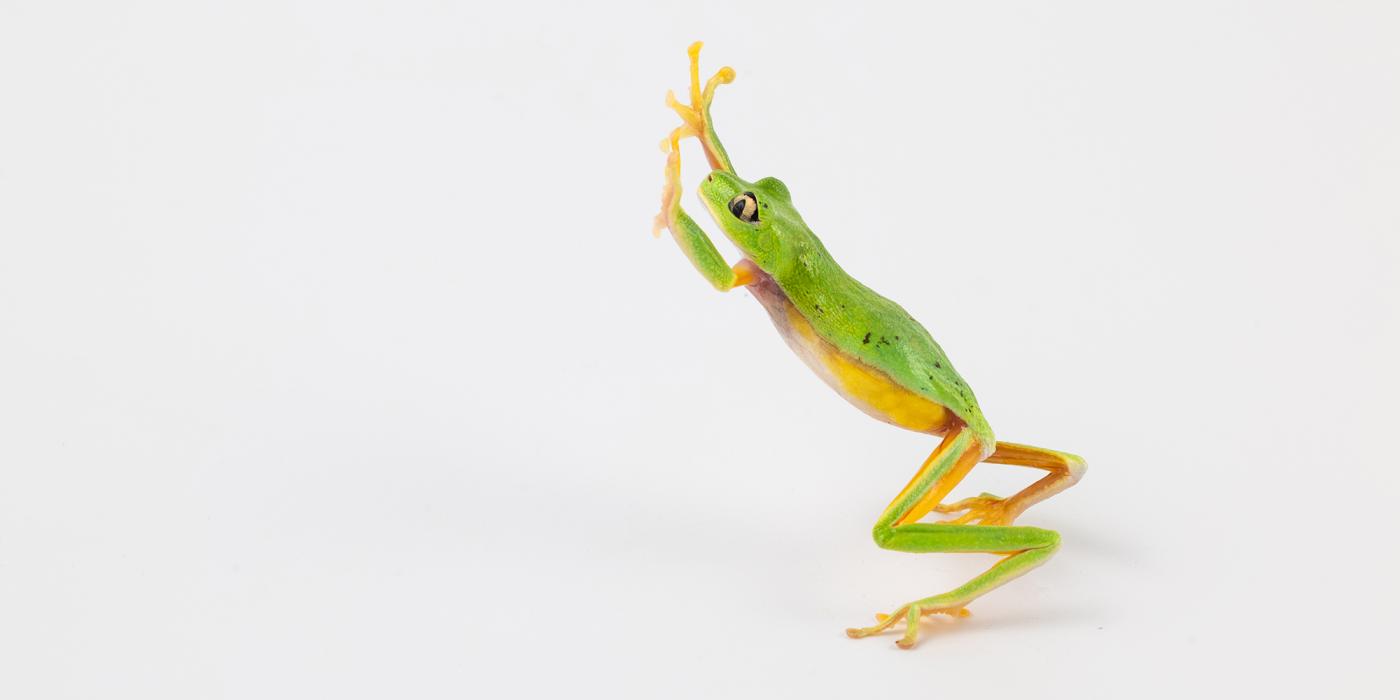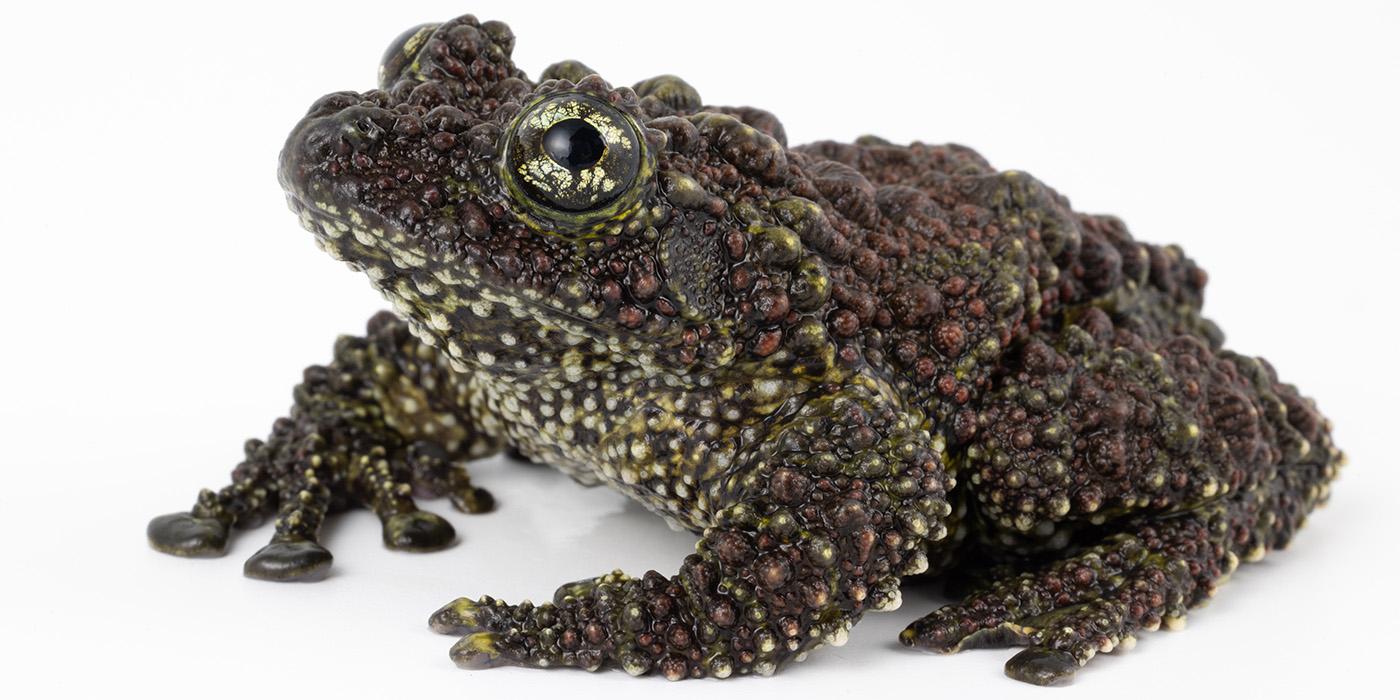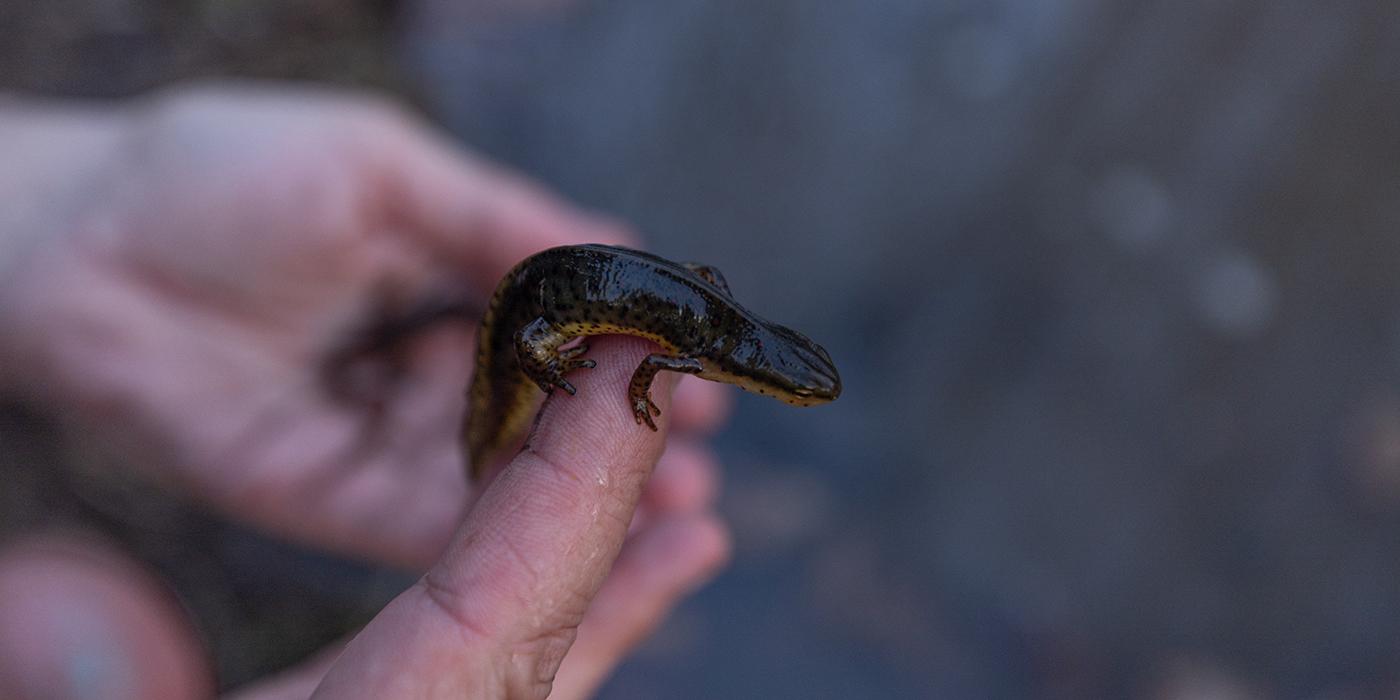Featured Creature: Salamander
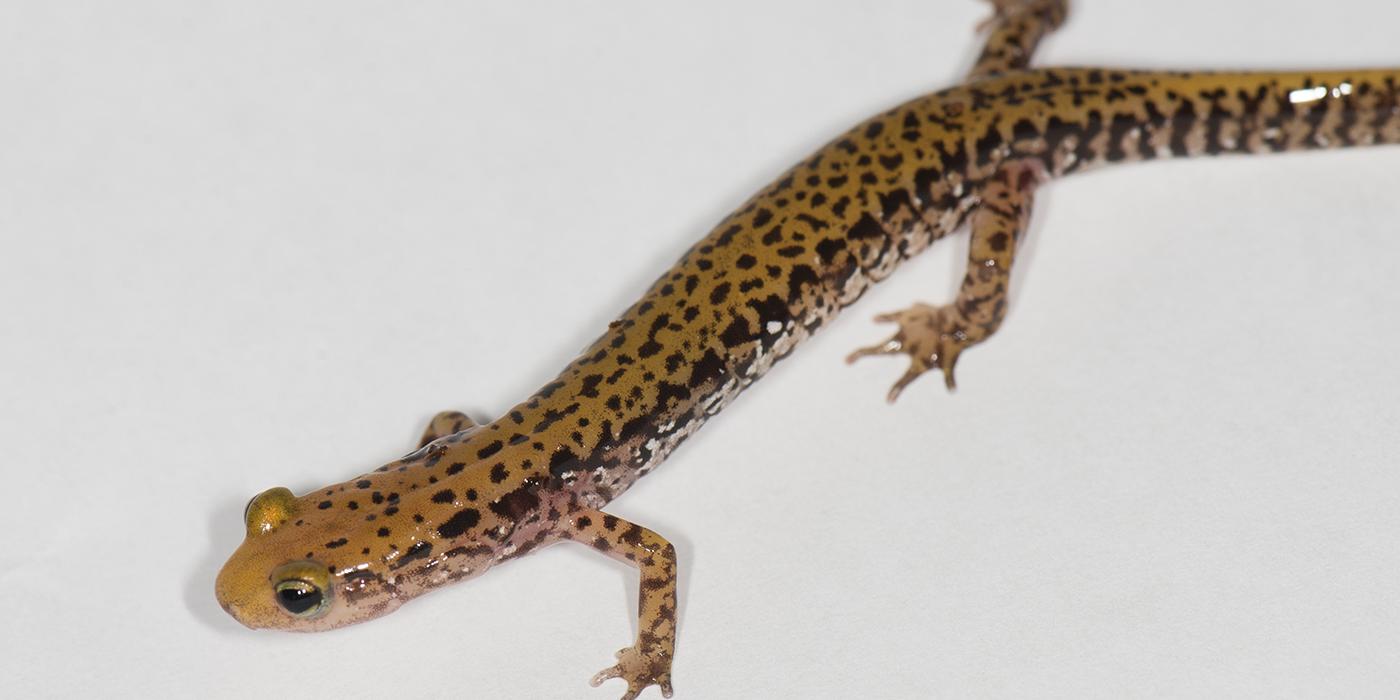
Happy salamander Saturday! This annual holiday honoring these amazing amphibians takes place on the first Saturday in May. To celebrate, we’re counting down animal keeper Matt Neff’s top six favorite salamander facts! Stop by the Reptile Discovery Center’s Jewels of Appalachia exhibit to see these awesome amphibians up close.
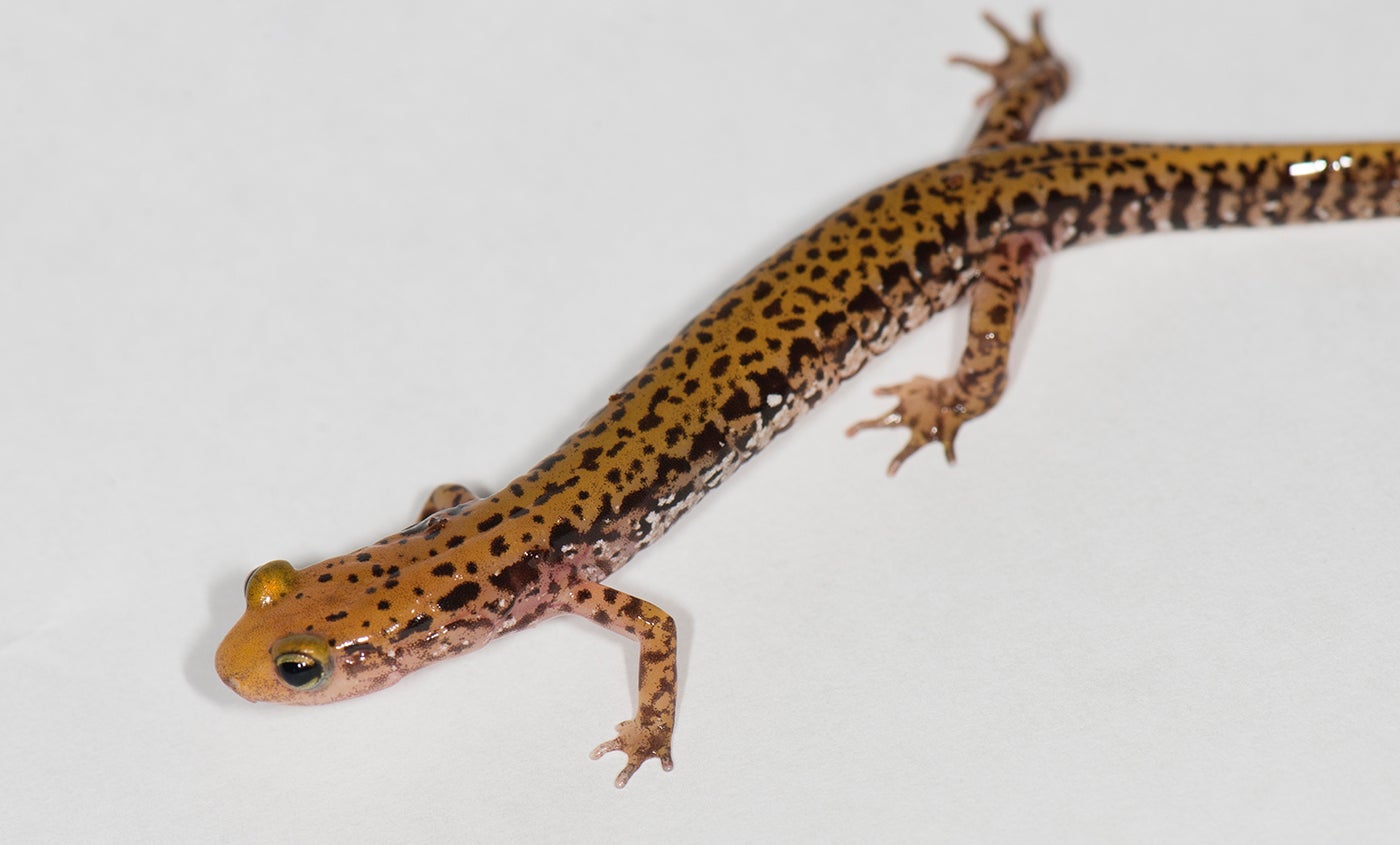
1. Salamanders have super-sensitive skin—and many breathe through it.
Two-thirds of all salamander species are lungless; instead, they breathe through their skin. A salamander’s body absorbs oxygen, but it can also absorb other elements, too. Because of this, they are very susceptible to pollution and toxins in the environment. Typically, salamanders will disappear from an ecosystem before small mammals or birds will. This is why some scientists compare them to a canary in a coal mine—salamander health often reflects the overall health of their environment. However, these species are masters at hiding, so if you are in their natural habitat and don’t see them right away—they may just be doing what they do best.
2. Salamanders can give you a hand—and grow theirs back.
One of the coolest things about salamanders is that most of them have the ability to regenerate body parts—including limbs, tails, eye tissue and even brain tissue. By studying how the salamanders’ macrophages are able to repair and regenerate so effectively, scientists can take what they learn and apply it to human medicine. In future, what we learn could help those who have lost limbs or are battling Alzheimer’s disease.
3. They have a wicked-fast tongue.
Many salamanders are ambush predators. The bigger, bulkier species tend to lunge at prey. Smaller species—including long-tailed salamanders and cave salamanders—have a different strategy. With prey in its sights, a salamander quickly contracts its muscles, causing the hyoid bone in its mouth to protrude. In the blink of an eye, the salamander’s elongated, sticky tongue has secured its meal. The speed with which they capture their prey is amazing. The northern red salamander can extend and withdraw its tongue in just 11 milliseconds!
4. Salamanders live in the Zoo’s backyard.
Part of what makes salamanders so cool is that they are as American as apple pie. The Appalachian ecosystem is home to more salamander species than any other region on the planet. Of the estimated 600 salamander species in the world, one-third are found in the United States—half of which live in Appalachia.
In Virginia, there are 54 species alone! One of the rarest species is the Shenandoah salamander, which is only found on three mountain peaks in Shenandoah National Park—located within an hour’s drive of the Zoo.
The biomass of all the red-backed salamanders alone would outweigh all of the deer in Appalachian forests. This abundance of salamanders means that they are helping to keep invertebrate populations in check. Their waste, too, helps contribute nutrients to the soil.
5. Looking for salamanders at the Reptile Discovery Center? Be Patient.
Because salamanders are nocturnal, the best time to see them up and about is early in the morning and around dusk. Generally-speaking, our salamanders tend to hide in the dark crevices of their exhibit. Be patient, and look closely at areas that are mossy and damp—those are the salamanders’ favorite spots.
6. Everyone can do their part to help salamanders!
The health of a salamander population in an area says a lot about the health of the whole ecosystem. The best things folks at home can do for salamanders are to refrain from polluting; be mindful of the pesticides you use in your yard, as these run into storm drains and out to waterways; and, disinfect your footwear before entering salamander habitat to avoid tracking bacteria and fungi that could be harmful to these and other amphibians.
This story appears in the May 2019 issue of National Zoo News.
